- Private car and driver in Delhi / India
- +91-8447445445
- info@discoverindiabycar.com sugar.ankit@yahoo.com
 +91-9818434712
+91-9818434712
Khatu Shyam Ji Temple: Unveiling the Mystique and Divine Grace
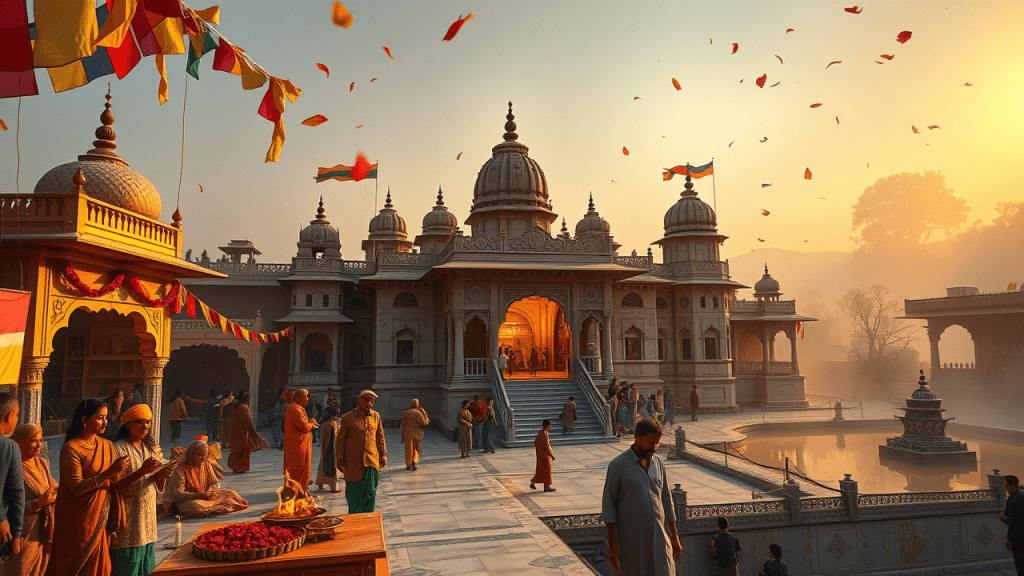
Nestled in the heart of Rajasthan, the Khatu Shyam Ji Temple stands as a beacon of faith and devotion for millions. Revered as an incarnation of Lord Krishna, specifically his manifestation as Barbarika (the mighty grandson of Bhima), Khatu Shyam Ji is believed to grant the wishes of his true devotees.
This sacred site is more than just a temple; it’s a vibrant hub of spiritual energy, steeped in fascinating legends, unique rituals, and a profound sense of divine presence. Unlike typical temple structures, the mystique of Khatu Shyam Ji lies in the captivating tale of a selfless warrior and the unwavering faith of his followers.
This article delves deep into the essence of Khatu Shyam Ji Temple, exploring its historical roots, architectural nuances, the spiritual significance it holds, and providing essential information for those seeking a transformative pilgrimage experience. Prepare to uncover the captivating story and enduring allure of this revered Hindu shrine.
The Enigmatic History and Legend of Barbarika/Khatu Shyam:
The story of Khatu Shyam Ji is deeply intertwined with the epic Mahabharata. Barbarika, known for his immense strength and unparalleled archery skills, possessed three infallible arrows capable of destroying any target. Witnessing the impending Kurukshetra War, he vowed to support the weaker side.
Lord Krishna, recognizing the potential imbalance this could create, disguised himself and tested Barbarika’s power. Impressed yet concerned, Krishna requested Barbarika’s head in charity, a sacrifice Barbarika readily agreed to, demonstrating his supreme selflessness and devotion to dharma.
Before his sacrifice, Barbarika requested to witness the entire Mahabharata war. His severed head was placed atop a hill, allowing him to be a silent observer. After the war, the Pandavas debated who deserved the credit for their victory. Lord Krishna suggested that Barbarika’s impartial observation would provide the most accurate answer.
Barbarika declared Krishna’s strategic brilliance as the key to their win. Pleased with his honesty and sacrifice, Lord Krishna blessed Barbarika, declaring that in the Kali Yuga, he would be worshipped as Shyam, and devotees who call upon him with a true heart would have their wishes fulfilled. The village where his head was discovered is believed to be Khatu, thus the name Khatu Shyam.
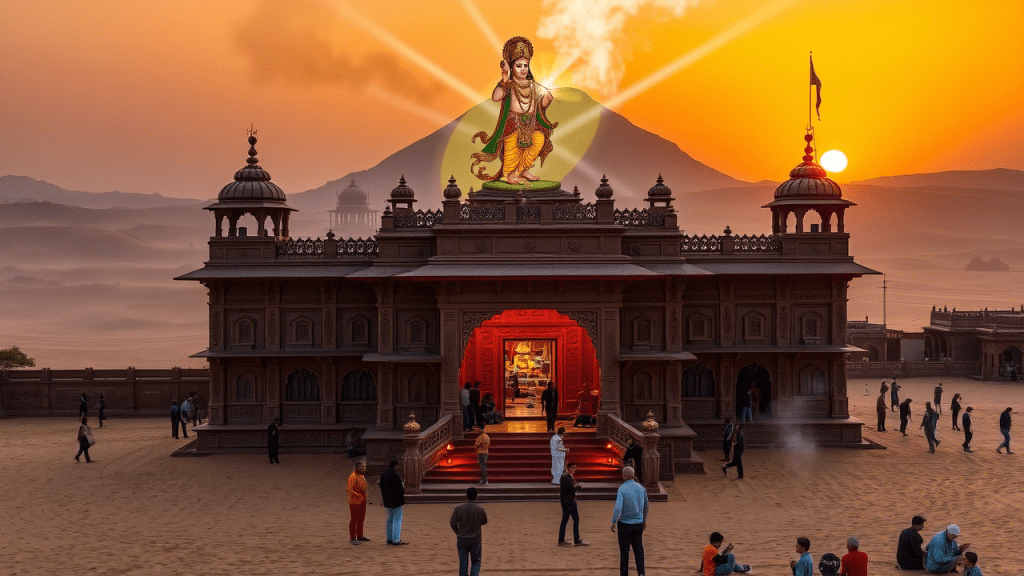
Architectural Marvel and Sacred Spaces:
While not exhibiting grand, intricate carvings like some ancient temples, the Khatu Shyam Ji Temple possesses a unique charm and architectural significance rooted in its history and the devotion it inspires. The current structure has evolved over centuries, with significant renovations undertaken by various rulers and devotees.
- The Sanctum Sanctorum (Garbhagriha): This is the heart of the temple, housing the revered head of Khatu Shyam Ji. The deity is adorned with vibrant clothing, intricate jewelry, and fresh flowers daily, a ritual known as Shringar. The darshan of the deity is the primary focus for devotees.
- The Prayer Hall (Sabha Mandap): A spacious hall preceding the sanctum sanctorum, where devotees gather for prayers, bhajans (devotional songs), and kirtans. The atmosphere here is often filled with fervent devotion and echoing chants.
- The Entrance Gates: The temple typically has prominent entrance gates that are often adorned with religious symbols and depictions from the life of Khatu Shyam Ji and Lord Krishna.
- Other Structures: The temple complex may also include spaces for pilgrims to rest, administrative offices, and areas for conducting rituals and distributing prasad (blessed food).
- The Holy Pond (Shyam Kund): Located near the temple, this pond is believed to be the site where Barbarika’s head emerged after being buried. Devotees often take a dip in its holy waters, believing it to be spiritually purifying.
The architecture of the temple prioritizes functionality and facilitates the smooth flow of devotees seeking darshan. The focus remains on the spiritual experience rather than elaborate architectural embellishments.
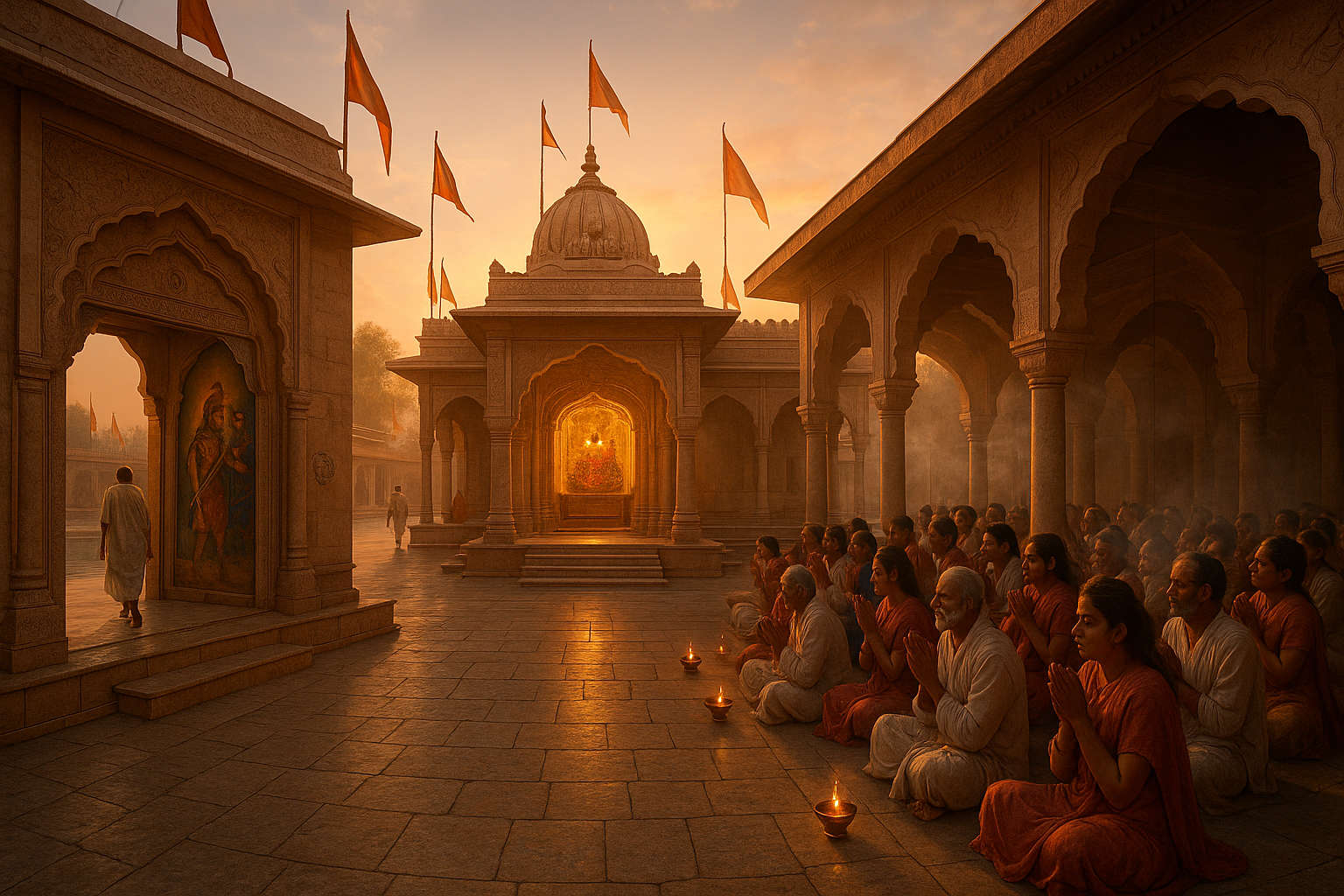
Unique Rituals and Traditions:
Khatu Shyam Ji Temple is known for its distinctive rituals and traditions that reflect the unique story of the deity:
- The Offering of Flowers (Especially Roses): As mentioned in some legends, Khatu Shyam Ji had a fondness for roses. Offering garlands and bouquets of roses is a common practice among devotees.
- The Nishan Yatra: Devotees, often carrying colorful flags (Nishans) on foot for hundreds of kilometers, especially during the annual fair, is a significant tradition demonstrating their unwavering faith.
- Bhajan and Kirtan: The air around the temple is often filled with devotional songs and hymns dedicated to Khatu Shyam Ji. Singing and participating in these musical offerings is an integral part of the worship.
- Special Aarti Ceremonies: The Mangla Aarti (morning), Shringar Aarti (adoration), and Shayan Aarti (night) are important daily rituals that devotees eagerly participate in.
- The Annual Khatu Shyam Fair: Held in the Hindu month of Phalgun (typically February-March), this massive fair attracts millions of devotees from across the globe. The atmosphere is electric with religious fervor, processions, and cultural events.
The Profound Spiritual Significance and Miracles:
Devotees flock to Khatu Shyam Ji Temple with a deep belief that their sincere prayers are answered. The deity is particularly known as the ” हारे का सहारा ” (Haare Ka Sahara) – the support of the defeated or the one who has lost all hope. Numerous stories and testimonials circulate among devotees about miraculous experiences and wish fulfillments after praying to Khatu Shyam Ji with a pure heart.
These accounts contribute significantly to the temple’s spiritual aura and the unwavering faith of its followers. The belief that merely chanting “Jai Shyam Baba” or “Hare Shyam” can alleviate suffering and bring blessings is deeply ingrained in the devotee community.
Visiting the temple is considered a spiritually enriching experience, providing solace, strength, and renewed hope to those facing life’s challenges. The collective devotion of the pilgrims creates a powerful spiritual energy that many find transformative.
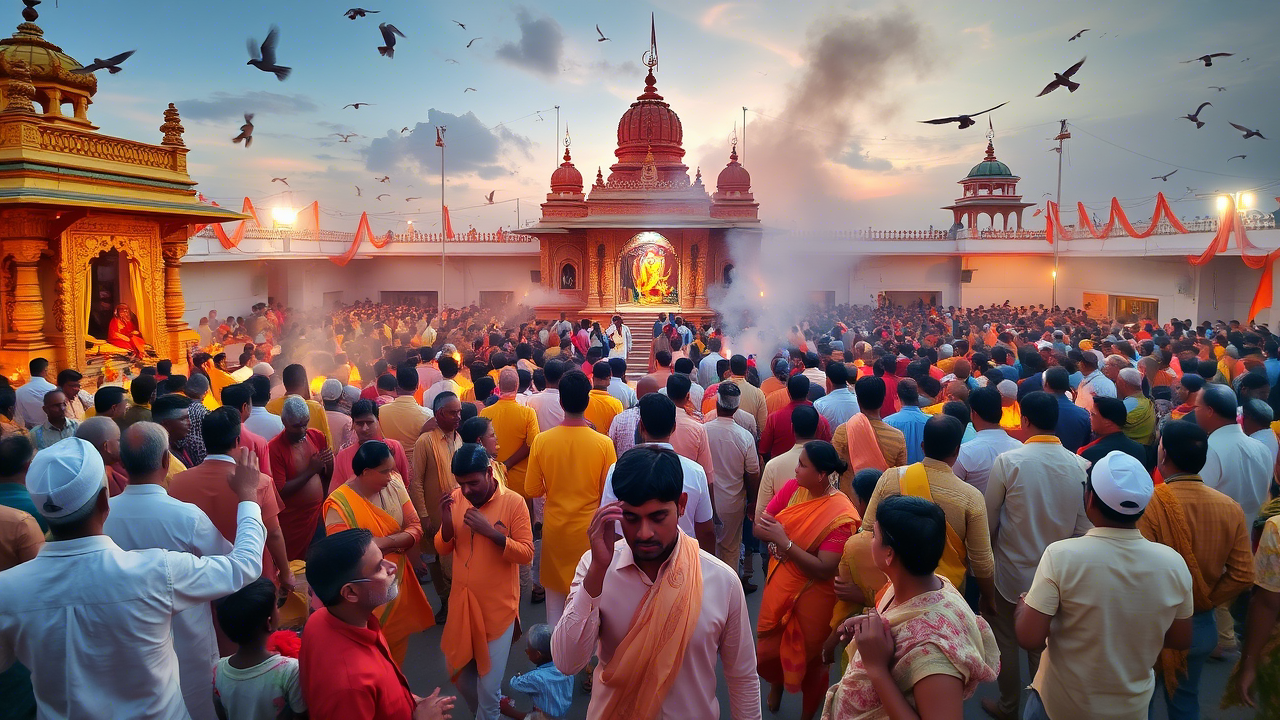
Planning Your Pilgrimage to Khatu Shyam Ji Temple:
Embarking on a pilgrimage to Khatu Shyam Ji Temple requires some planning to ensure a smooth and fulfilling experience:
- Best Time to Visit: While devotees visit year-round, the cooler months (October to March) are generally more comfortable for travel. Be prepared for large crowds during festivals, especially the annual Phalgun Mela. Weekdays, especially early mornings, tend to be less crowded.
- Accommodation: Khatu village and nearby towns offer various accommodation options, ranging from budget Dharamshalas (pilgrim rest houses) to guesthouses and hotels. Booking in advance, especially during peak season, is highly recommended.
- Transportation:
- By Road: Khatu is well-connected by road to major cities in Rajasthan and nearby states. Buses and private taxis are readily available.
- By Train: The nearest railway station is Ringas Junction (approximately 17 km from Khatu). Regular trains connect Ringas to major cities like Delhi and Jaipur. You can hire a taxi or take a local bus from Ringas to Khatu.
- By Air: The nearest airport is Jaipur International Airport (approximately 80 km from Khatu). You can hire a taxi or take a bus from Jaipur to Khatu.
- Temple Timings: Temple timings can vary depending on the season and special occasions. It’s advisable to check the latest timings on the official temple website or reliable sources before your visit. Generally, the temple opens early morning for Mangla Aarti and closes after Shayan Aarti at night, with a break in the afternoon.
- Dress Code: While there isn’t a strict dress code, it’s recommended to dress modestly and respectfully when visiting the temple.
- Important Considerations:
- Be prepared for crowds, especially during festivals.
- Stay hydrated, especially during the summer months.
- Be mindful of your belongings.
- Respect the local customs and traditions.
- Prasad (blessed food) is often available at the temple or nearby stalls.
- Photography inside the sanctum sanctorum may be restricted.
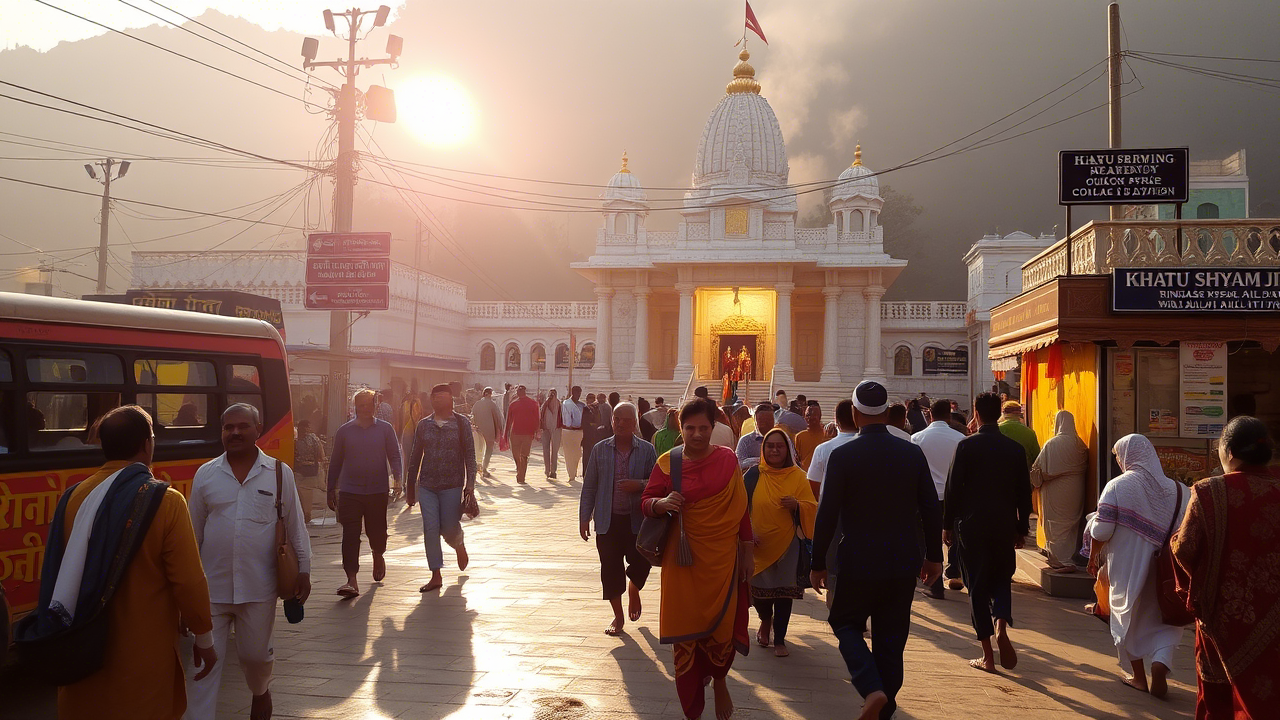
Conclusion:
The Khatu Shyam Ji Temple is more than just a religious destination; it’s a testament to unwavering faith, selfless sacrifice, and the enduring power of divine grace. The captivating legend of Barbarika, the unique rituals, and the countless stories of answered prayers create an atmosphere of profound spiritual energy. A pilgrimage to Khatu Shyam Ji offers devotees an opportunity to connect with the divine, seek blessings, and experience the deep-rooted traditions of Hinduism. Whether drawn by the historical narrative, the architectural simplicity, or the fervent devotion of its followers, a visit to Khatu Shyam Ji Temple is an experience that leaves a lasting spiritual impression.
Frequently Asked Questions (FAQs):
Q1. Who is Khatu Shyam Ji and why is he worshipped?
A. Khatu Shyam Ji is revered as an incarnation of Lord Krishna in his manifestation as Barbarika, the grandson of Bhima from the Mahabharata. He is worshipped for his immense sacrifice, selflessness, and the divine blessing bestowed upon him by Lord Krishna to fulfill the wishes of his devotees in the Kali Yuga.
Q2. Where is the Khatu Shyam Ji Temple located?
A. The Khatu Shyam Ji Temple is located in the village of Khatu in the Sikar district of Rajasthan, India.
Q3. What are the key festivals celebrated at Khatu Shyam Ji Temple?
A. The main festivals celebrated are Holi, Janmashtami, and the annual Phalgun Mela (Khatu Shyam Fair), which is the largest and most significant, attracting millions of devotees in February-March.
Q4. What is the significance of offering roses to Khatu Shyam Ji?
A. According to local legends, Khatu Shyam Ji had a fondness for roses during his earthly life. Offering roses is considered a way to express love and devotion to the deity.
Q5. What is the meaning of “Haare Ka Sahara” associated with Khatu Shyam Ji?
A. “Haare Ka Sahara” translates to “support of the defeated.” Khatu Shyam Ji is known by this epithet because he is believed to be the refuge and support for those who have lost all hope and seek his divine intervention.
Q6. Is there any specific dress code to visit Khatu Shyam Ji Temple?
A. While there isn’t a strict dress code, it is advisable to dress modestly and respectfully when visiting the temple, adhering to traditional norms of religious places in India.
Q7. What are the typical temple timings for Khatu Shyam Ji Temple?
A. Temple timings generally include morning (Mangla) Aarti, general darshan hours, evening (Shringar) Aarti, and night (Shayan) Aarti. However, timings can vary based on the season and festivals. It’s best to check the current schedule from reliable sources before your visit.
Q8. Are there accommodation facilities available near Khatu Shyam Ji Temple?
A. Yes, Khatu village and nearby towns offer a range of accommodation options, including Dharamshalas, guesthouses, and hotels. Booking in advance is recommended, especially during peak season.
Q9. How can one reach Khatu Shyam Ji Temple?
A. Khatu can be reached by road (buses and taxis), by train (nearest station Ringas Junction), and by air (nearest airport Jaipur).
Q10. What are some important tips for planning a visit to Khatu Shyam Ji Temple?
A. Plan your visit during cooler months, book accommodation and transportation in advance (especially during festivals), be prepared for crowds, dress modestly, respect local customs, stay hydrated, and check the latest temple timings.











